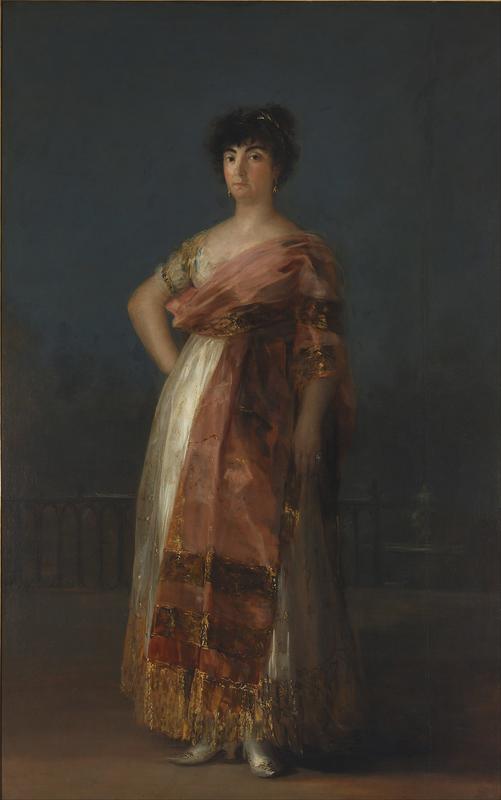More about La Tirana

Contributor
By the standard of her time, the subject of Goya's luminous The Tyrant, known to Spanish theatergoers as La Tirana or Rosario Fernández, was an icon of the actualization of the potential of women.
In this first of two Goya portraits of the actress, the artist had an illness which would eventually destroy his sense of hearing, but he still retained all the brilliance of his many years of experimentation in painting, showing la tirana in a majestic pose. Like Gangloff and Klumpke, Goya portrays a contemporary woman in a way that does justice to her legacy.
La Tirana received her name as a complement to the name of her husband, Francisco Castellanos. They say that Castellanos earned the tyrannical nickname El Tirano for his dramatic roles, but that sounds like a particularly rosy historical gloss to me. They married when La Tirana was fourteen, in Seville, then moved to Madrid to work in the four royal palaces, becoming enormously successful between 1780 and 1793. Unfortunately, she and her management did not pay enough attention to her health, and she vomited blood at her last performance, in the last decade of her life. The following year, after his own illness, Goya painted her again, and this second portrait is in a private collection. The second portrait is quite a contrast to the first la tirana.
Apparently, nobody ever knew exactly why Goya went deaf, but it could have resulted from an illness due to his decision to fix a broken wagon axle for his muse and paramour, the Duchess of Alba, in the middle of winter while he accompanied her into exile. He learned how to read lips and learned sign language, and continued his prolific work, which became much more focused on the painful and unpleasant aspects of life.
José María Martín Valverde claims that the 18th century in Spanish society was the first in which women were able to gain some degree of political independence from men, before Romanticism reinvigorated the story of the woman as the passive subject of veneration and/or vilification. Valverde emphasizes that La Tirana became very financially wealthy, independent, and influential, but that her success would cause her personal problems and problems with art institutions, due to the extreme subjugation of women in society. In her case, according to Valverde, it was mo' money, mo' problems, but not due to any fault of her own – it was only because her chorus of mostly-male haters couldn't stand to see a strong woman countin' stacks.
Sources
- Beruete y Moret, Aureliano. Goya as Portrait Painter. New York: Houghton Mifflin, 1922.
- Crastre, François. Goya. New York: Frederick A. Stokes Co., 1914.
- Lang, Harry G. Deaf Persons in the Arts and Sciences: A Biographical Dictionary. Westport, CT: Greenwood Publishing Group, 1995.
- Masters in Art: a Series of Illustrated Monographs. Boston: Bates & Guild, 1906.
- Plaza, J.M. "La Tirana: algo más que un sexual del siglo XVIII." El Mundo, Mar. 29, 2018, https://www.elmundo.es/cultura/literatura/2018/03/29/5abd299ae5fdea2755….
- Zanardi, Tara. Framing Majismo: Art and Royal Identity in Eighteenth-Century Spain. University Park, PA: Penn State, 2016.
- Zgustova, Monika. Goya's Glass. New York: The Feminist Press at CUNY, 2012.
Featured Content
Here is what Wikipedia says about La Tirana (Goya, 1792)
La Tirana is an oil on canvas portrait by Francisco de Goya. Previously dated to 1799 due to a later pencil inscription, it is now dated to 1790–1792 by the Goya scholars José Gudiol and José Manuel Pita Andrade. It is now in the Real Academia de Bellas Artes de San Fernando in Madrid.
It is the first of two portraits he produced of the actress María del Rosario Fernández, known as 'La Tirana' after her actor husband Francisco Castellanos, who was nicknamed el Tirano. The other is in a private collection.
Check out the full Wikipedia article about La Tirana (Goya, 1792)












